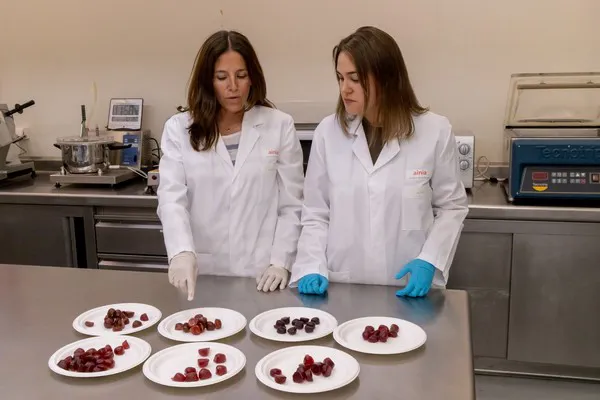AINIA, the Institute of Agrochemistry and Food Technology (IATA-CSIC) and Productos Lácteos Romar are participating in a project intended to boost the value of agricultural by-products and obtain ingredients with improved technological and nutritional properties, with which to make dairy desserts, gummies, snacks or toppings.
Agricultural by-products are particularly interesting as alternative sources of food ingredients, given the large volume generated and the large amount of dietary fiber they contain. Within the framework of the VALUÓS project, work is being carried out with three large groups of crops with a significant production volume in the Spanish Region of Valencia: citrus, watermelon and kakis and their respective by-products.

This project, backed by the Valencian Innovation Agency (AVI), is being implemented by a consortium formed by IATA-CSIC, AINIA and Productos Lácteos Romar, with the support of ANECOOP. It is looking into the possibility of replacing some of the usual stabilizing and texturizing ingredients used in the production of dairy desserts and jelly beans with pectin-rich extracts obtained from waste. In addition, with the fiber-rich part that remains in these wastes after pectin has been extracted, work is being done to obtain extruded products, such as toppings for dairy desserts.
For its part, AINIA is evaluating the technological properties of kaki pectins for the production of jelly beans. "The first results show good gelling properties, resulting also in a product that has a more natural appearance and that makes it possible to use a lower dose of pectins for its manufacture than those already available commercially," explained María Teresa Navarro, of AINIA's Product and Process Technologies department.
Likewise, the company Postres Lácteos Romar is working with these pectins in the formulation of new products, such as custards and creams.
Watermelon and kaki, alternative sources of food ingredients
Both watermelon and kaki have a high pectin content, around 13-35% in watermelon and 4-12% in kakis. Therefore, these by-products are a potentially profitable source of pectin, in addition to a sustainable and high value-added option that promotes a circular economy.
The use of pectins obtained from by-products offers several advantages: it reduces the cost of the final product, allowing greater access to the consumer; it facilitates the use of agricultural waste by converting it into raw material; it enables the development of novel desserts; and it reduces the sugar content by partial replacement with pectins.
 For more information:
For more information:
AINIA
www.ainia.es
